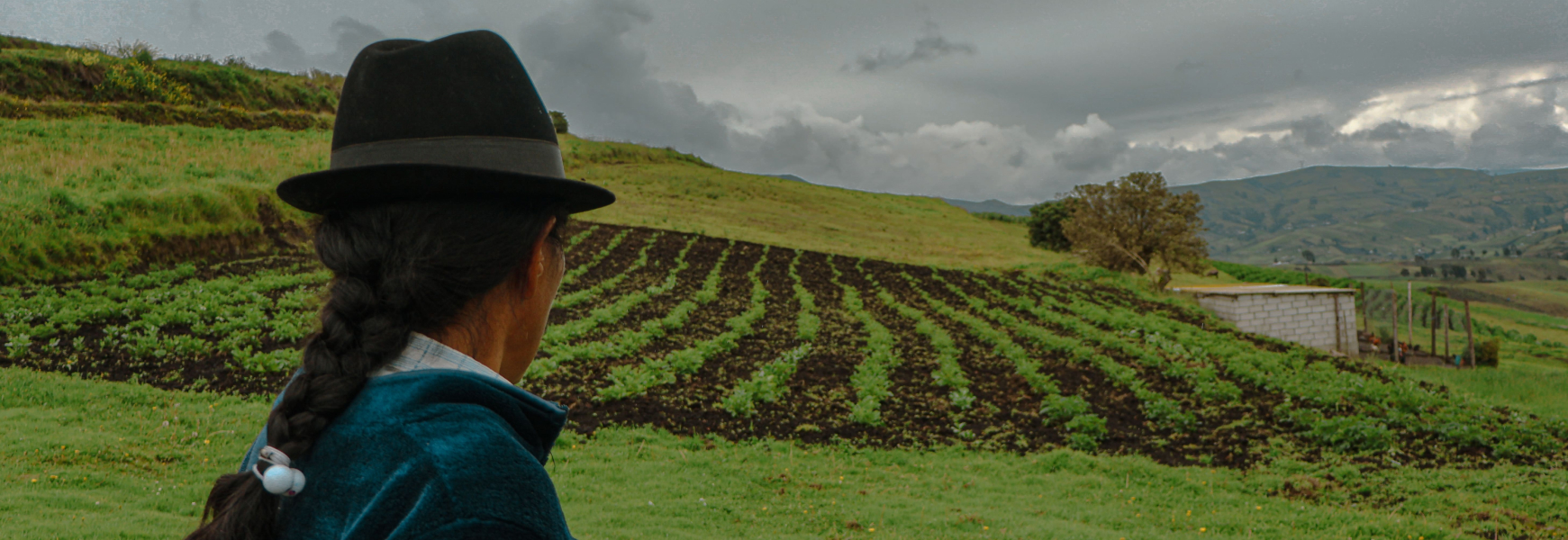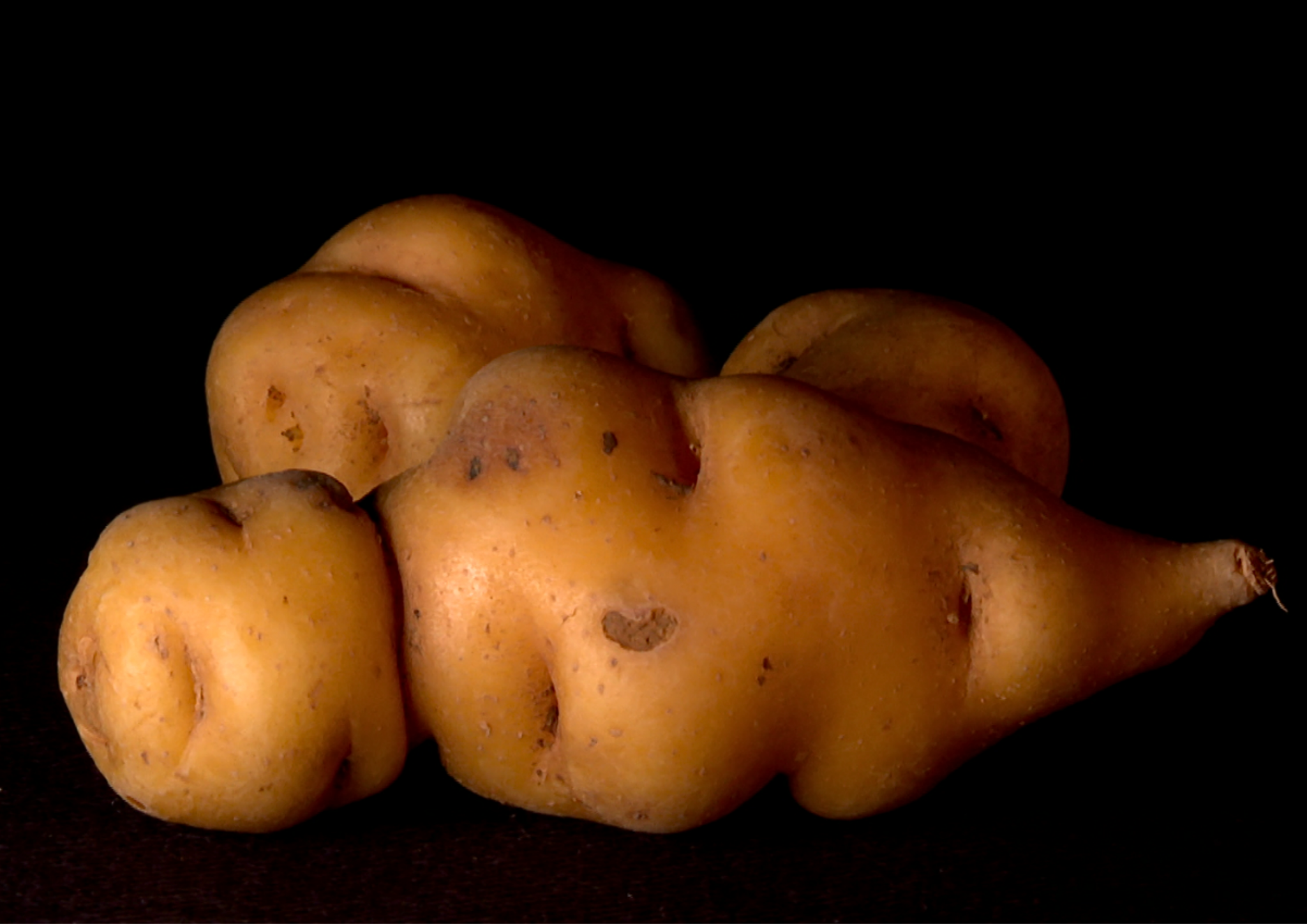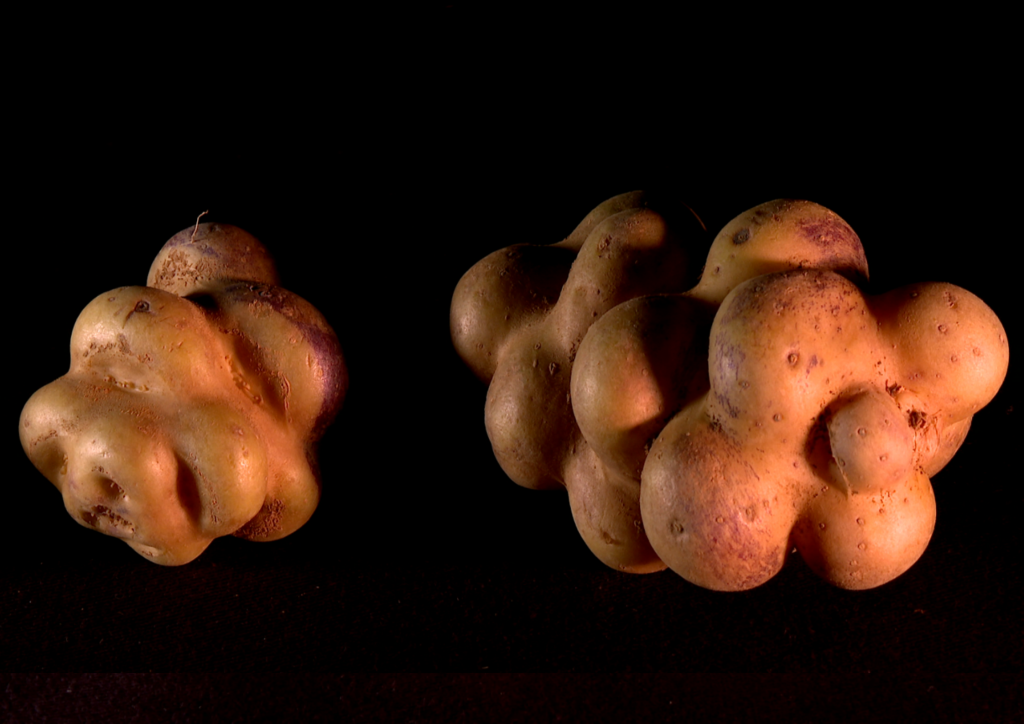Saving Andean Potatoes: How Farmers Are Fighting Crop Disease like Punta Morada with Agroecology
By Rebecca Wolff
On our recent field visit to the provinces of Cotopaxi and Chimborazo, with our partner EkoRural, potatoes were everywhere — in a steaming bowl of soup at lunch, and flowering across the rolling hillsides in Mulallilo. This was very different to my life back home in Vermont. Potatoes are always a side dish, never the star of a meal, and they are often labeled as just a starchy food. Yet, potatoes are nutritious, high in vitamin C, and the more colorful and pigmented the potatoes are, the more antioxidants they contain. The most formative years of my career were spent learning about and appreciating this important crop and the role it plays for smallholder Andean farming communities. Nothing gives me more joy than digging my hands into the earth and pulling out round little potato nuggets during a harvest.
Another of my favorite qualities of the potato is its long and complex history. Researchers believe humans started cultivating the potato about 7,000 years ago near Lake Titicaca in Peru. There are over 4,000 documented potato varieties in the Andes that range in size, color, texture, and nutritional content. One of my favorite potatoes, for its unique texture, is the Yana Piña or Weeping bride/Mother-in-law potato. This extremely bumpy potato gets its name from a tradition where a woman’s possible mother-in-law presents her with this potato, which she must peel correctly to marry her son.
Images via Latina Noticias
Unfortunately, conventional agriculture threatens the potato. Conventional agriculture promotes the use of monoculture, chemical pesticides, and commercial and hybrid seeds. All these practices damage soil health, decrease ecosystem biodiversity, and decrease the production of Indigenous and native crops. They also make our food systems more vulnerable to pests and diseases, as chemical inputs can kill local beneficial insects, and planting only one type of crop makes an entire harvest susceptible to a single plant disease.
During our field visit to Ecuador, we witnessed firsthand the dangers conventional agriculture poses to Andean potatoes. Many families no longer grow a variety of potatoes; instead, they only seed improved commercial potato varieties like the Super Chola. The loss of potato and crop biodiversity threatens farmers’ livelihoods, decreasing their resilience to climatic changes, pests, and plant disease. Every farmer group we met was particularly concerned about a rapidly spreading plant disease, the punta morada (purple top) potato.
This disease, likely caused by bacteria or phytoplasma, impacts the potato leaves and aerial tubers. It originated in North America, but for many years had been documented in other countries where Groundswell International’s partners work such as Mexico, Guatemala, and Honduras. Beginning in 2012, more cases of punta morada were reported in Ecuador, and it has now become increasingly problematic for farmers who plant potatoes. Farmers whose potatoes are infected with punta morada can lose up to 100% of their potato harvest, which can have devastating impacts on household food security and income.
Currently, there are very few options available to combat punta morada other than the use of chemical insecticides or to completely stop planting in fields where there is infection. However, agroecological practices, like the revitalization of native seed varieties, regenerating the soil, and increasing the presence of beneficial insects and bacteria, may help improve crop resiliency to this infection. Researchers have also noted that collaboration between different food systems actors is essential to combating this disease, which has many unknowns.
During a field visit to the community of Atocha, we saw strong examples of collaboration. Our partner, EkoRural, INIAP, and the International Potato Center are working with local women’s groups to plant and test native and underused potato varieties to see if they are more resistant to the punta morada infection. This also ensures farmers have access to native potato seeds —enhancing crop diversity, revitalizing traditional foods, and supporting a broader transition to agroecology. On their plots, women farmers are testing over nine native potato varieties, using farmer-led experimentation to determine which varieties can better withstand disease.
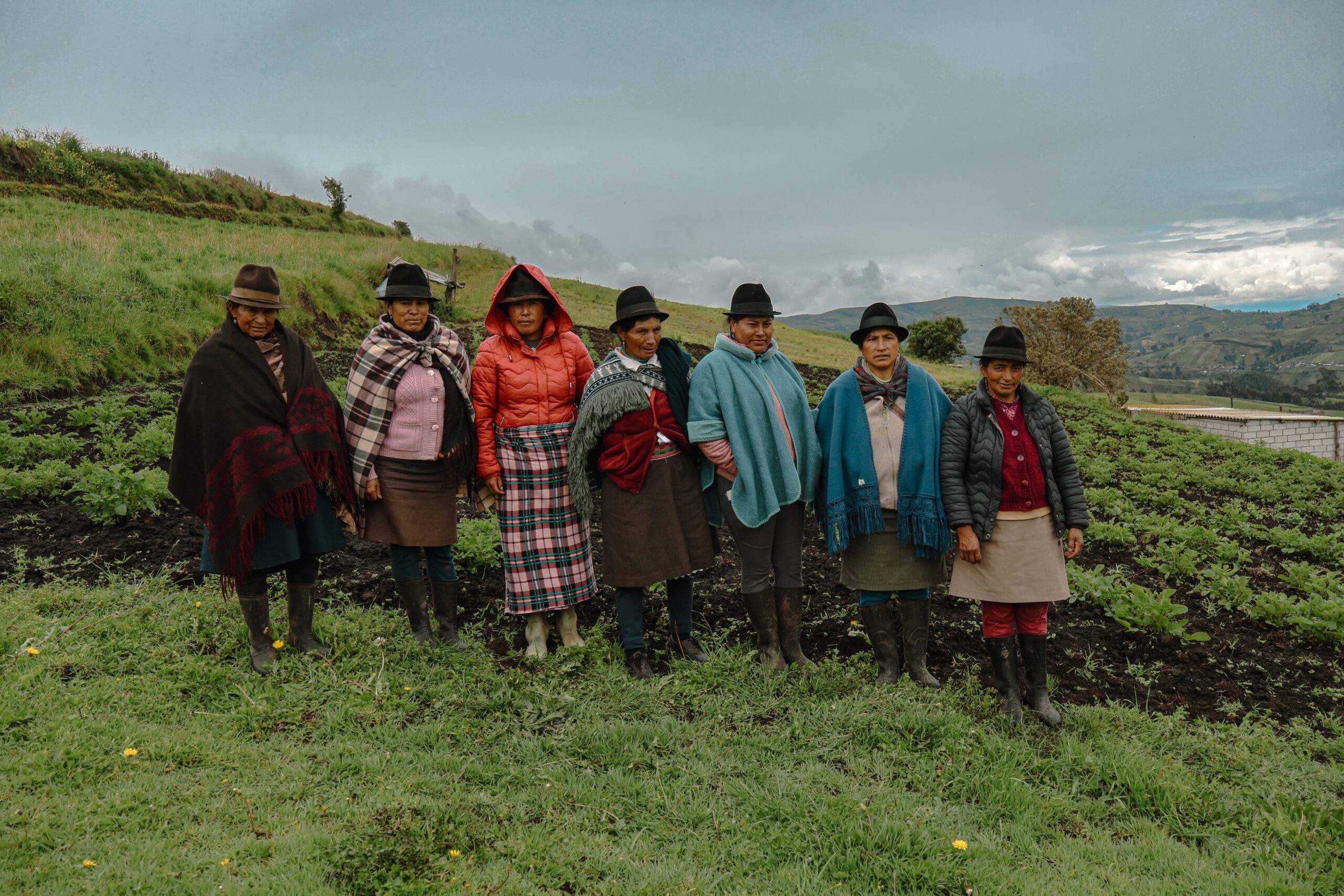
This experience in Ecuador was an important example of the fragility of our food systems. The potato, a crop that has existed for thousands of years, and the communities that consume it, can be greatly impacted by a single plant disease, amplified by conventional agriculture. While there is still much work to do to find a cure for the punta morada, smallholder farmers are taking important steps to discover how to prevent this disease. I am inspired by the work of our partners, collaborators, and farmers. Their revitalization of native potato varieties, innovation, and experimentation are essential to healing our planet and food systems to become more resilient and to revive crops we are at risk of losing!
About the author
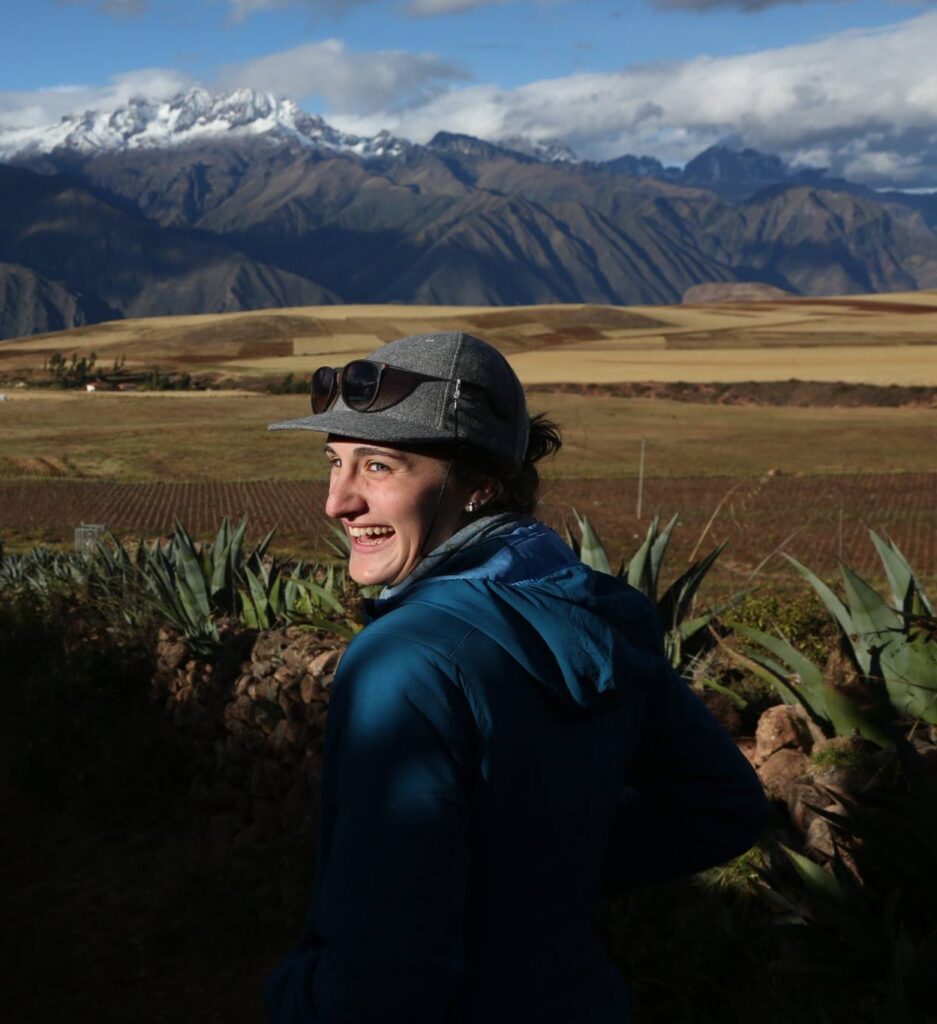
Rebecca Wolff is Groundswell International’s Program Director and is an experienced food systems researcher and project manager. Prior to joining Groundswell International, her career focused on harnessing the power of collaboration to execute impactful projects at the intersection of agroecology, food systems, and well-being. She is a two-time National Geographic Grantee and received her M.S. from the University of British Columbia, where she developed a framework to measure the impacts of agroecology and food sovereignty on well-being.

